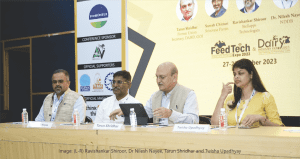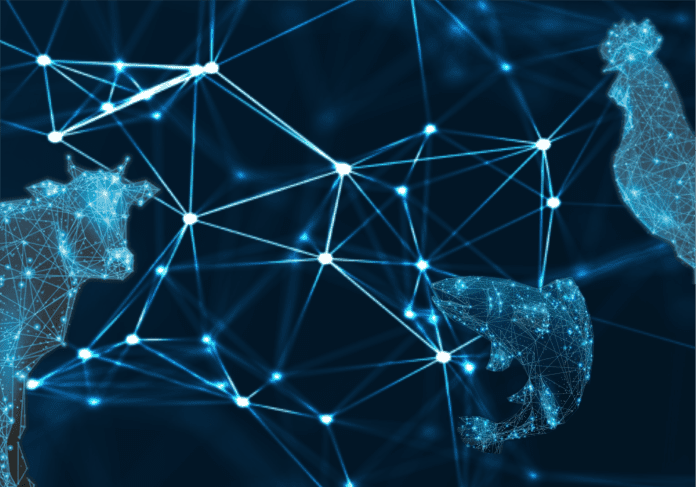Tarun Shridhar, Former Secretary of DAHD, Government of India, and Moderator of the session, explored the role of various digital interventions in the livestock, dairy, and aquaculture sectors. While the initiatives are commendable, evaluating their actual impact remains a crucial task. As a country, we are a giant as far as numbers are concerned whether it is dairy, poultry, or aquaculture but we are dwarfed when it comes to productivity. Despite being the biggest producer, our farmers are among the poorest, indicating a substantial void that must be addressed and digitalization is the way forward.
Dr Nilesh Nayee, NDDB presented on NIPAH, a system comparable to Animal Adhar, offering comprehensive details on parameters such as breed, health, nutrition, diet, and animal productivity. Currently, with over 28 crore animals and 8 crore farmers registered, the system provides information on animal location, breed, age group, etc. This data proves instrumental in tasks like vaccination and artificial insemination. The challenge lies in accessing and translating this information into effective policies. Recognizing this, NDDB identified the necessity for BI tools to disseminate tailored information. Consequently, NDDB, in collaboration with the Government of India, launched the National Digital Livestock Mission, aiming to integrate the entire dairy production system.
Ravishankar Shiroor, Stellapps Technologies, discussed the entire flow of data right from farmers to the end consumer and how at every stage digitalized data can add value not only to the process but value to all the stakeholders. The strength of well-captured, accessible, and effectively utilized data lies in its ability to empower every element throughout the value chain.
Twisha Upadhyay, Eruvaka Technologies, emphasized the impact of digitalization in shrimp farming, illustrating how automatic feeders can improve farm KPIs through optimum and frequent feeding. Additionally, she highlighted the effectiveness of AI-based digital interventions in feed management, where sensors capture the sound of the shrimp to determine its appetite and use this information for dispensing feed. This results in optimum shrimp growth, significant feed cost savings, and better water quality. She also spoke about how real-time monitoring of dissolved oxygen and temperature de-risks shrimp farms and leads to significant electricity and diesel cost savings.


In concluding the session, Tarun Shridhar characterized digitalization as a disruptive force, urging a departure from conventional business practices. He emphasized the need to use digital interventions in the overall management and enhance the competitiveness of India’s dairy, poultry, and aquaculture sectors. The session delineated digitalization’s role, spanning across sectors—from breed selection to feeding, health, product, processing, and marketing. This tool is poised to assist stakeholders and policymakers in crafting policies that have a tangible impact on the last mile.













